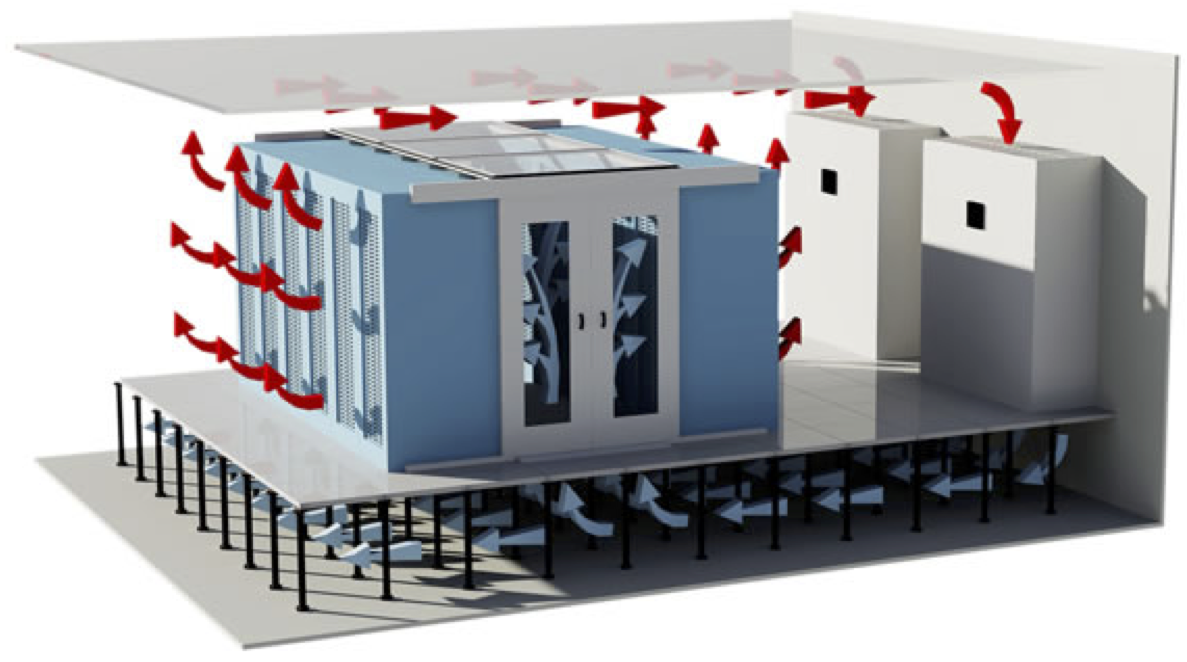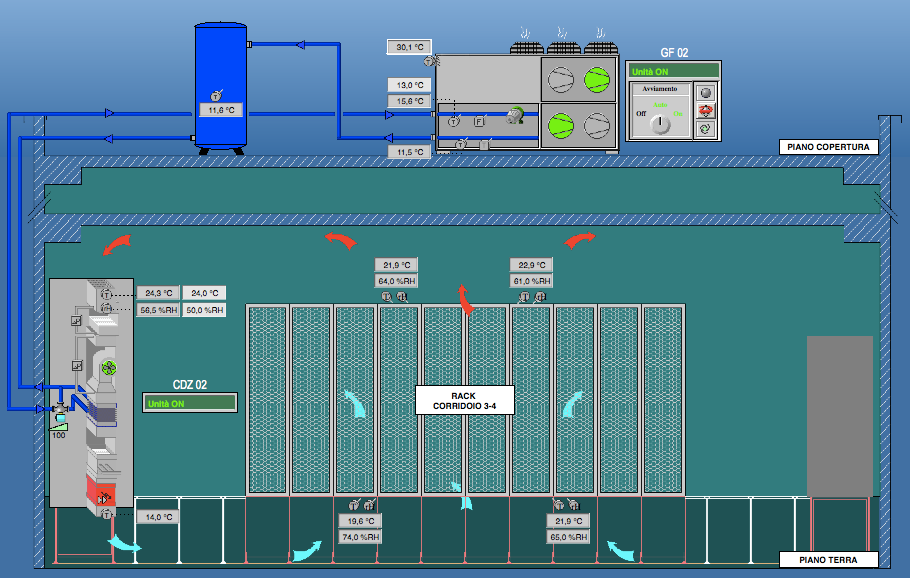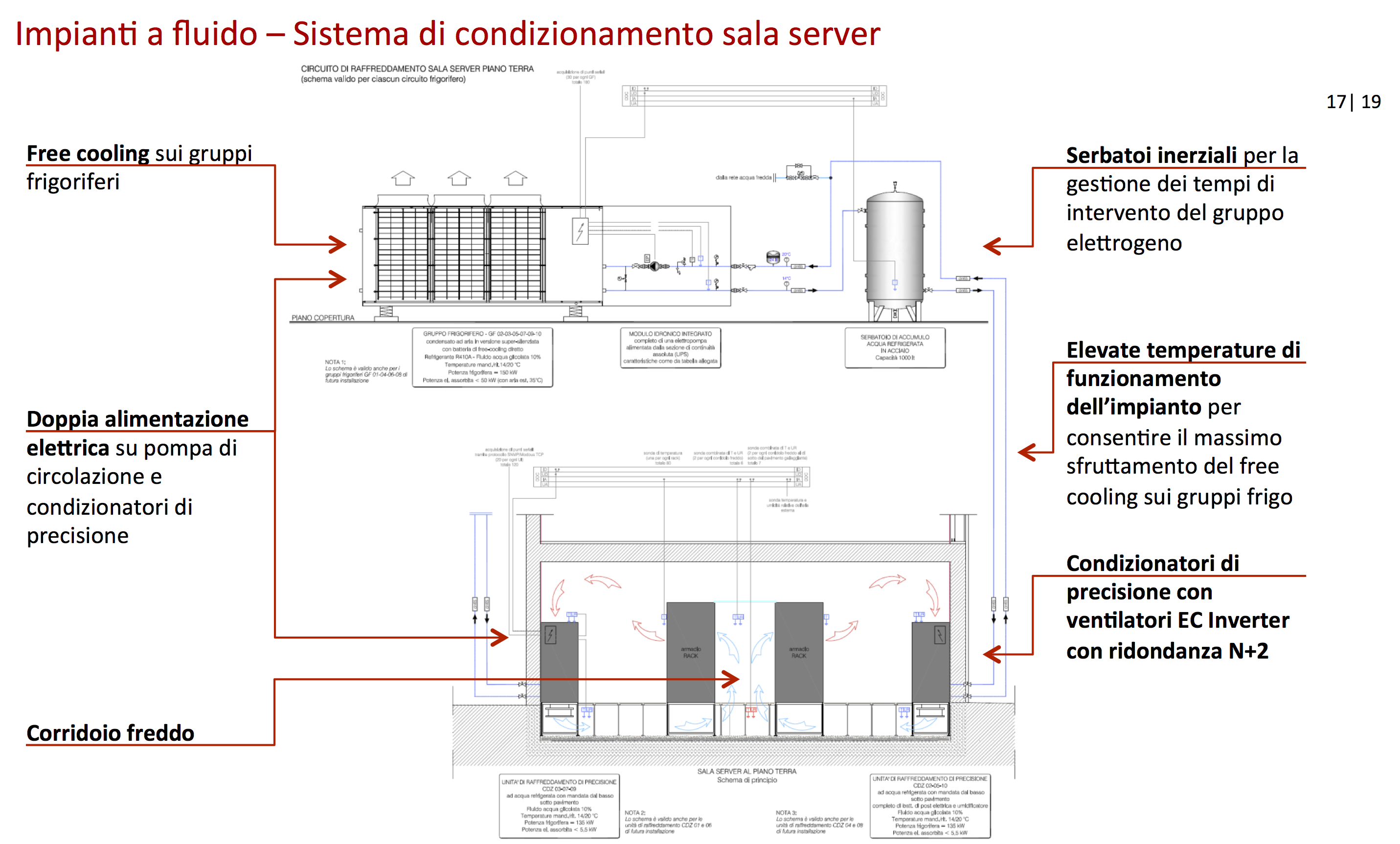
In the ReCaS DataCenter, the removal of the heat produced by the IT equipment is done accordingly to the cold aisle schema, shown in the figure.
The cold air, conveyed under the floor by the CRACs (Computer Room Air Conditioner) positioned along the walls of the DataCenter, comes out in the aisle of each rack island, between the two rows of racks.
From there the cold air passes through the server themselves, cooling them, and is expelled into the environment at a higher temperature.
This type of cooling system offers advantages such as:
- the absence of admixture flows of hot and cold air;
- improved energy efficiency;
- a better use of the hall.
The ReCaS DataCenter has 6 peripheral CRACs, each able to dispose up to 135 kW of heat generated by the IT equipment. The system is therefore able to ensure a redundancy N + 2.

Each CRAC is connected to a 150 kW refrigeration unit (chiller) located on the roof of the building; the diagram in the figure shows the cold water circuit.
A reservoir, inserted on the cold water circuit, allows to overcome small intervals of lack in the operation of the chiller, for example in case of electricity black-out until the auxiliary generator gets activated.
This cooling schema allows to operate with chilled water at rather high temperatures (input flow to the CRAC at 14 ° C and return to 20 ° C) obtaining important advantages:
- the cooling output from the internal units is all sensitive and therefore useful to reduce thermal loads emitted by computing equipments;
- improves the performance of the chillers;
- offers the possibility to exploit for longer time the free-cooling, because the its operating range depends on the input and return temperatures of the water.
The structure is already prepared for the installation of 4 additional pairs CRAC-chiller units: in this way the system will be able to dispose of up to 1 MW of heat produced by the IT equipment.



